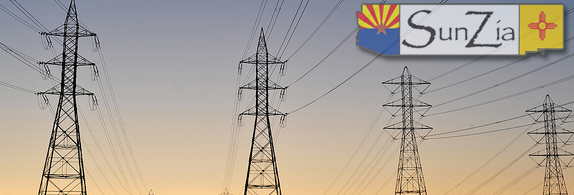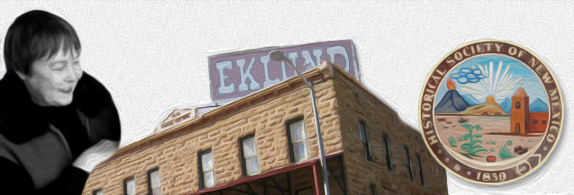Right to Work or a Chance to Work for Decent Pay

Union busting is designed to reinforce the American class system with its various economic and occupational hierarchies. These fiscal ghettos range from the high life enclaves of people, predators all, who know how to get a whole lot of something from hard up other people by spending a whole lot of nothing for their time, energy, and skills, to the rest of us who live in varying degrees of economic insecurity, largely because our occupations have no unions to protect us.
Right to work ideology is a nasty form of classism. And union busting is a way to keep people imprisoned in the “lower” classes, pure and simple. It’s become such a deep-seated part of the class system that the Republican Party won’t stop attacking unions even when there are practically no unions left.
There’s a very good chance that a right to work bill will pass the Republican held New Mexico House of Representatives this year, and even make it through the coalition of conservative Democrats and Republicans in the NM Senate to get to the governor’s desk. It would be a mostly symbolic defeat for Democrats as unionism in our state is virtually dead except for collective bargaining for some public employees.
The fundamental reality of working in America is what I’d call a rigid hierarchy of wage exploitation even for those doing high status work. If you’re an artist, a musician, a singer, a composer, a writer, a part-time university professor, a young actor, a nurse, or a physical therapist your economic partners are not the high status rich, but the low status underpaid – the dishwashers, health care attendants, waiters, cashiers, and fast food workers, people who have to work two to three jobs to stay afloat. What that means is that some kinds of work pay extremely well and some kinds of work pay next to nothing at all, no matter how physically or mentally arduous they may be.
Some people can sit for three hours in a board room of a major financial institution and “earn” $3,000 a meeting, and might accumulate as much or more than $250,000 a year for their name and advice alone.
If you’re a part-time history professor at a state university in New Mexico you will bring down $3,000 to 4,000 a semester for each class you teach. The average male assistant coach at UNM is in a different class altogether. He will make around $120,000 a year. Economic misogyny dictates, however, that the average female coach will earn $70,000 plus. To reach $70, 000 as a part-time history prof you’d have to teach eight or nine classes a semester—almost a physical impossibility—while your average tenured counterpart in the history department might drawn down $80,000 to $110, 000 a year for teaching two classes a semester. But, some argue, the tenured people have to publish and do research. So do the part-time PhDs if they are to keep competitive in a growing “market” of struggling scholars with no hope of ever achieving tenure. This is, of course, just one example of hundreds of wage disparities in our state which have little to do with merit and almost everything to do with hierarchy and the frozen wages they represent.
Wouldn’t a union made up of part-time, non-tenure track college professors at UNM seem like a good idea for them? But the university and its departments are not sympathetic to such an idea. Low paid scholars teach around 30 percent of the school’s classes. And many of them are in such financially precarious positions with low salaries and student loans to pay that any kind of rocking the boat, even on their own behalf, is threatening to their security and economic stability.
If fast food workers, and all others on the lower end of the wage spectrum, would unionize, the economic disparity between the rich and the poor in America, a disparity which is wrecking our economy and destabilizing our social infrastructure, would shrink dramatically. Imagine the financial clout of a unionized workforce at Walmart, the world’s richest company? But that’s never going to happen, unhappily, because Walmart is one of world’s stingiest employers and among most ferocious anti-union sweat shops in the world.
The financial aristocracy, and the politicians who support it in this country, equate good jobs with low paying jobs. Why? Because in the marketplace jobs are costs, and costs are to be kept as low as possible. According to the Economic Policy Institute, a liberal think tank, the United States leads the major developed countries in “low-wage work and the lowest wages for low-wage workers.” That amounts to more than 60 million low wage American workers, the majority of them older people.
This sorry state of affairs can be attributed to union busting and to the endlessly droning propaganda of right-to-work fanatics who claim, fallaciously, that unions force people to join them and thereby drive out businesses with good paying jobs. Seeing as how only 11.1 percent of American workers last year were unionized, much of that number coming from public employee unions, the claim is bogus on the face of it.
In New Mexico right-to-work is downright silly. We have 46 unions, most of them public employee unions, that account for 6.2 percent of our employed population. That’s right – 6.2 percent.
And yet passing a right-to-work law in New Mexico is at the top of the Albuquerque Chamber of Commerce’s political agenda at this year’s legislature on the pretense that it will somehow increase jobs coming into the state from the 89.9 percent of employers who, if the Labor Department’s statistics are correct, are not unionized.
And so goes the class war in New Mexico, the aristocracy flailing away and punching every ghost and phantom “blocking” imported new jobs, while at the same time bullying with low wages every exploited worker it can find.
SunZia Power Lines

When U.S. Representative Steve Pearce of New Mexico’s Second Congressional District opposed the SunZia power line project in 2013 I thought his objections smelled of oil and gas cronyism. SunZia, approved last week, will carry wind, solar, and geothermal generated energy from New Mexico, starting near Roswell, to Arizona and potentially to California and other southwestern desert states. It will transmit enough renewable energy to supply a million households.
Pearce said he opposed the transmission line because it would run though a tiny northern portion of the vast White Sands Missile Range, crossing about 45 miles of it and endangering “national security.” That seemed bogus on the face of it, if you know that region of the state and it’s truly immense empty spaces. It’s not illogical to assume other motives. Fossil fuels and fracking companies have given Pearce so much money that only two other U.S. Congressmen get more from them than he does.
Pearce also opposed SunZia on the grounds that it would damage archaeological sites and wreck some wildlife habitat, concerns this Congressman, with his notorious environmental blind-spot, has never expressed before. The Center for Biological Diversity has even gone so far as to say that Pearce is the “face of radical anti-environmentalism.”
Normally, I wouldn’t look kindly on a BLM supported proposal to put power lines through open country in New Mexico and Arizona. But a combination of fossil-fuel created climate change, Pearce’s disingenuous opposition, and the current historic drought impacting hydroelectric power from the Colorado River Basin cause me to support SunZia’s proposal. Its two big power lines will carry up to 3,000 megawatts of previously stranded renewable energy over a distance of some 515 miles to eager markets in Arizona, Nevada, and California. After the BLM dickered with the Department of Defense over initial objections to crossing White Sands, portions of the power line that move across the tip of the firing range will be buried underground. Despite the Albuquerque Journal’s editorial accusing the BLM of selling out New Mexico and the nation’s security needs by approving SunZia, the DOD, which safeguards our national security, doesn’t hold the same opinion as its deal with the BLM clearly shows. And New Mexico’s future as a major source of energy for the West can no longer depend on fossil fuels which are coming under increasing national and international scrutiny as a major source of greenhouse gases and climate change.
SunZia could be the beginning of a swath of new power lines originating in New Mexico and Texas moving west to California. Hoover Dam, behind which rests Lake Mead, supplies critical hydroelectric power to Southern California. But after more than 14 years of climate-change driven drought Lake Mead has shrunk some 60 percent from its normal size. Hoover Dam can generate more than 2,000 megawatts of electricity but, because of low water levels, it has reduced its transmission already by turning off the generators at night, diminishing Southern California’s supply of electricity. This limitation of hydroelectric power also seems to be a long range trend.
SunZia’s gigantic carrying capacity of 3,000 megawatts could more than make up for a diminished Hoover Dam, should drought be the new normal in the Colorado River Basin, which supplies Lake Mead. And as fossil fuels and nuclear energy soar in costs and danger, renewable energy will become ever increasingly competitive in the water-starved West.
The SunZia line will also interact with what may prove to be one of the most significant energy developments in New Mexico history – the proposed Tres Amigas project outside of Clovis. Tres Amigas is described as a “multi-terminal AC/DC transmission superstation…that will interconnect America’s three main power grids: the Eastern, the Western, and the Texas Interconnections.” Tres Amigas would link to SunZia and other transmission projects in an area of the country in which renewable energy resources abound. This preparing for the future of non-polluting renewable energy doesn’t sound like what the Journal calls “a sellout” of New Mexico to me. But it apparently does to the new Republican State Land Commissioner, Aubrey Dunn, who has put a 60-day hold on approval of allowing SunZia’s power lines to cross state trust land. This is one of the many potential fallouts stemming from the defeat of incumbent Land Commissioner Ray Powell, a long time champion of renewable energy.
There are troubling and saddening aspects to the project , however. SunZia’s proposed route cuts through one of the largest roadless areas in Arizona and New Mexico and could dangerously disrupt wildlife migrations and ways of life in that area, according to the Wilderness Society. I hope there is still room for compromise between the BLM and local environmental advocates regarding the details of the SunZia route.
Why We Love New Mexico – Carleen (Crisp) Lazzell – 1940 – 2015

Carleen Lazzell was a great behind the scenes advocate of New Mexico architecture and New Mexico history. She was born in Clayton, NM 74 years ago and died their earlier this month. Carleen was a matchless friend. She never forgot a birthday. She never forgot what interested those she befriended. Conversations with her were full of laughter and recollection of days long ago, and rich with information and wise perspective. Her work as an editor and a scholar of our history and of the fascination New Mexicans have always had with architecture was so pervasive in her life it energized those around her. I regard her as a New Mexico treasure. She wasn’t much over 5 feet tall, but when it came to public service, and the things she loved, she gave them all she had. And in that sense she was a giant.
Carleen was a rancher’s daughter and had a fondness for big trucks, even though it seemed to me she’d have to sit on a pile of phone books to see out the windshield. But big trucks, big jobs, big responsibilities were no match for her energy and determination. She married the designer and builder Rue Lazzell in l959. They had two daughters. Carleen’s passion for learning drove her on and she eventually earned her BA, an MA, and, in l996, a PhD from UNM in architectural history.
Her father, I.V. Crisp and Carleen’s mother Irene were married for 64 years. They owned the Echoing Hoof Ranch in Union County. I.V. Crisp was awarded the Buck Ramsey Cowboy Lifetime Achievement Award in 2003 for “fostering and living the Cowboy Way of Life.” He died in 2004 at 86. Carleen told me, if I remember correctly, he’d just saddled up and was riding out to check on is livestock when he passed away.
Carleen wasn’t exactly self-effacing, but she wasn’t a credit-taker either and she rarely talked about her accomplishments. She did the kind of work that made other people look good. She became associate editor at New Mexico Architecture, founded and edited by John Conron, a Santa Fe architect, and helped him produce the highly literate and handsomely illustrated magazine. She and Melissa Payne authored Historic Albuquerque – An Illustrated History in 2007. Carleen also served as the editor of the information packed La Cronica de Nuevo Mexico, the publication of the New Mexico Historical Society, which was first edited by John Conron in the l970s. She and her husband were instrumental in the beautiful renovation of the famous Eklund Hotel in Clayton.
When I learned of Carleen’s passing in an obit two weeks ago, I felt a kind of sinking in myself as I’m sure many people did across the state. For those of us who love New Mexico, Carleen was one of the reasons why. She was tough and gentle and kind. Her self-determination was unstoppable. She reflected a way of life that still survives in our state, one that values land, tradition, learning, and making do. She was a historian. Human lives, all kinds of human lives, mattered to her. Everyone in every era was interesting and important. And if you were her friend, she treated you that way too. I can count the lunches we had over the years, perhaps no more than seven or eight. But I remember them warmly, and gratefully. I was hoping to have many more. Carleen knew what was important in life. And she knew how to live. Nothing was unworthy of her interest or her curiosity. She made everyone she knew feel good to be alive.
(Photos: “United We Bargain” by DonkeyHotey / CC; transmission lines by Chris Hunkeler / CC; Eklund Hotel by Wordbuilder / GNU Free)




Responses to “Provincial Matters, 2-2-2015”